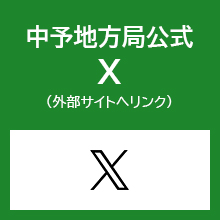本文
Immersing yourself in Tobe porcelain
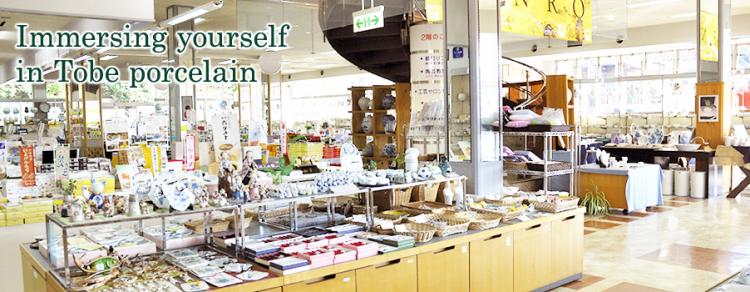
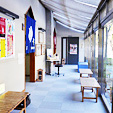
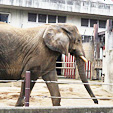
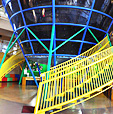
 Tobe-Porcelain Traditional Industry Hall
Tobe-Porcelain Traditional Industry Hall
On the first floor, there is a display of historical artifacts of Tobe-yaki ceramic ware, special examples of porcelain art, and modern pieces by contemporary artisans.
On the first floor, there is a display of historical artifacts of Tobe-yaki ceramic ware, special examples of porcelain art, and modern pieces by contemporary artisans. On the second floor, works from about 80 potteries are on display and available for purchase, and there is a changing program of exhibitions.

When entering the center, you will be greeted by a huge porcelain jar and globe. The atmosphere inside is quite calm, so that you can take time to appreciate the objects. On the second floor, exhibitions are held and ceramic pieces are available for purchase. Even if you don't start off as a fan of Tobe-yaki porcelain, a visit will certainly deepen your understanding and appreciation of it.

"We get the most visitors during the Tobe-yaki Fairs in spring and fall."
"We hold various exhibitions."
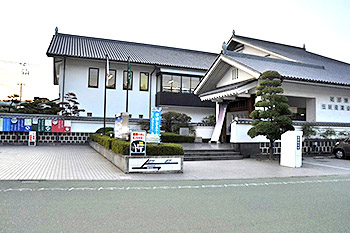
Open hours
9:00-17:00
(closure Monday) Monday opens a public holiday.
(closure from December 29 to January 1)
Price
Adult/ 300yen, Aged 65 and over/ 200yen
High school and College student/ 200yen
Schoolchild and Junior high school student/ 100yen
(Group discount 15 or more persons)
Parking lot
50 cars
Address
335, Ominami, Tobe town, Iyo gun
Contact information
Telephone number 089-962-6600
Fax number 089-962-6877
Web
http://www.iyo.ne.jp/tobe-densan/<外部リンク>
tobe-densan@iyo.ne.jp
About 5 minutes(By Car)
 Tobe Ceramic Promenade
Tobe Ceramic Promenade
The pathway and walls along this 500-meter long promenade, which runs from the Tobe-Porcelain Traditional Industry Hall through Tosogaoka, to the Tobe Creative Porcelain Making Center are decorated with porcelain tiles.
The pathway and walls along this 500-meter long promenade, which runs from the Tobe-Porcelain Traditional Industry Hall through Tosogaoka, to the Tobe Creative Porcelain Making Center are decorated with porcelain tiles. On the way, there is a panoramic view of the town of Tobe from the hillside.

Along the promenade can be seen many examples of Tobe porcelain tiles, some made by local high school students. The work of many hands has gone into decorating the walk with the art of Tobe-yaki ceramics.
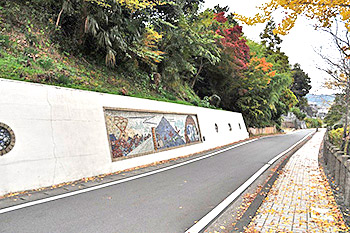
Open hours
-
Price
-
Parking lot
-
Address
874, Ominami, Tobe town, Iyo gun
Contact information
-
Web
-
-
About 5 minutes (On Foot)
 Tosogaoka (Founder's Hill)
Tosogaoka (Founder's Hill)
Close to Tobe Ceramic Promenade is Founder's Hill.
Close to Tobe Ceramic Promenade is Founder's Hill. Built in 1942, it has several monuments to people who have made notable contributions to the history of Tobe-yaki, such as the founder Josuke Sugino*.
* A potter active in the 1700s, Sugino was one of the original creators of Tobe-yaki. He was the first to fire-bake porcelain and become self-sufficient in glazing materials.

There stand the monuments to honor many people who helped build the foundation for the local pottery industry, including Josuke Sugino, the founder of Tobe-yaki ceramic ware. There is also the "Ceramic Wall Monument" which is embedded with a chronological arrangement of ceramic products that show the history of Tobe-yaki ceramic ware. From the hill you can enjoy a bird's-eye view of Tobe town.
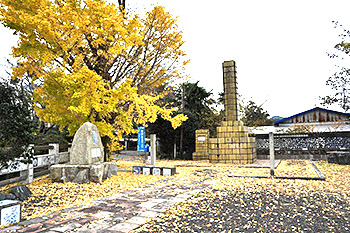
Open hours
-
Price
-
Parking lot
Nothing
Address
Ominami, Tobe town, Iyo gun
Contact information
-
Web
-
-
About 5 minutes (On Foot)
 Pottery (Umeno Seiko Toen)
Pottery (Umeno Seiko Toen)
There are several potteries producing Tobe-yaki ceramic ware around the Tobe Ceramic Promenade.
There are several potteries producing Tobe-yaki ceramic ware around the Tobe Ceramic Promenade. Some sell ceramics direct to the public and allow visitors to see the manufacturing process first-hand (though please check if reservations are required if you plan a visit). Among them, Umeno Seiko Toen, established in 1892, displays and sells original Tobe-yaki as well as porcelain from Mogura-no-kama.

Umeno Seiko Toen manufactures and sells Tobe-yaki using traditional production methods. On the second floor, porcelain from Mogura-no-kama (literally, mole kiln) by four young local ceramic artists who use a Noborigama, or climbing kiln, is on display and sold.
* An especially tall type of kiln that is built against a topographic feature such as a slope, to maintain high temperatures through convection.

"Many customers from the Kanto area have visited." (Umeno Seiko Toen)
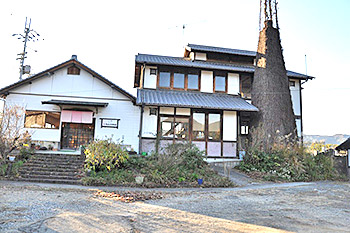
Open hours
-
Price
-
Parking lot
-
Address
1035, Ominami, Tobe town, Iyo gun
Contact information
Telephone number Fax number 089-962-2142 (Umeno Seiko Toen)
Web
-
-
About 1 minutes (On Foot)
 Tobe Creative Porcelain Making Center
Tobe Creative Porcelain Making Center
The Tobe Ceramic Promenade starts from the Tobe-Porcelain Traditional Industry Hall and ends here.
The Tobe Ceramic Promenade starts from the Tobe-Porcelain Traditional Industry Hall and ends here. This workshop runs three types of short courses. In the Rokuro class participants can try their hand at using an electric potter's wheel. In the Tebineri (hand-forming) class you can learn how to mold clay on a hand-operated potter's wheel, or form it using a traditional wooden spatula. In the Etsuke (painting) workshop, you can create your own designs on unglazed pottery.

In the Rokuro and Tebineri workshops, instructors are on hand to guide you through making your own work. It takes about one month to finish the first, or biscuit, firing stage, and another two or three weeks for the final firing when you apply painting. Without painting and glazing, items appear white, and in the Etsuke workshop, you can choose a piece you like out of about 100 items of crockery to paint with Gosu*. It takes two or three weeks until the process is complete.
* Pigment used for porcelain and other ceramics, which becomes blue after firing.

"Many people from Ehime and elsewhere have visited here."
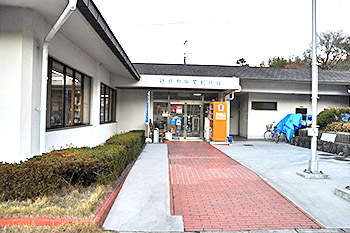
Open hours
9:00-17:00
(closure Thursday)Thursday opens a public holiday.
(closure from December 28 to January 4 )
Price
Rokuro course/ 1,500yen(One-person one work) Reservation required
Tebineri course/ 1,500yen(One-person two work) Reservation required
Painting course/ 300yen No Reservation
Mailing costs are special.
Parking lot
About 20 cars
Address
82, Gohonmatsu, Tobe town, Iyo gun
Contact information
Telephone number Fax number 089-962-6145
Web
https://www.town.tobe.ehime.jp/site/sosakukan/<外部リンク>
sosakukan@tuba.ocn.ne.jp
About 7 minutes (By Car)
 En no Sato: Tobe-yaki Visitors Center
En no Sato: Tobe-yaki Visitors Center
Located at the bottom of Misaka-toge (mountain pass) along the National Route 33, Tobe porcelain is available for purchase and tours explaining the manufacturing process as well as workshops of pottery throwing and porcelain souvenir painting are available.
Located at the bottom of Misaka-toge (mountain pass) along the National Route 33, Tobe porcelain is available for purchase and tours explaining the manufacturing process as well as workshops of pottery throwing and porcelain souvenir painting are available. Within the premises there is a multi-stories Senzan-gama kiln. With a remarkable design of three kilns rising in a staircase pattern it is built with a kind of brick produced in Tobe (Tonbari).

The center displays and sells porcelain from an array of potteries such as Senzan-gama. You will be able to get a close look at how Tobe-yaki is made, and on the second floor can experience what it's like being a potter by trying out a potter's wheel, hand-forming clay objects, and painting your own designs (fee applicable).
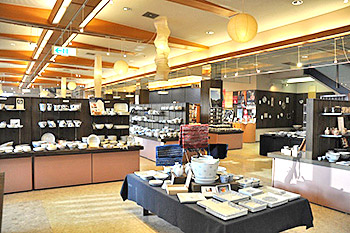
Open hours
8:30-18:00 (closure only December 31)
Price
Painting course/ 315yen~
Clay structure course/ 1,575yen~
Tebineri course/ 2,000yen~
Parking lot
About 100 cars
Address
359, Senzoku, Tobe town, Iyo gun
Contact information
Telephone number 089-962-2070
Fax number 089-962-6611
Web
http://www.tobeyaki.co.jp/( External link )<外部リンク>
info@tobeyaki.co.jp

 Kaikatei
Kaikatei
The Tokaido Dream Tower Eito-kun, which uses Tobe-yaki porcelain tiles, serves as a landmark of this restaurant.
The Tokaido Dream Tower Eito-kun, which uses Tobe-yaki porcelain tiles, serves as a landmark of this restaurant. It is a traditional Japanese-style building with white walls, set in a Japanese garden. The restaurant serves locally-caught seafood from the Seto Inland Sea and the blessings from the mountains.

The restaurant prides itself on using the freshest fish, crab, meat and seasonal produce. Tobe-yaki is used for Kaiseki-ryori and Nabe-ryori, as well as the lunch menu. On the east side of the restaurant, there is the Hoan annex where the late poet Shinmin Sakamura* gave a monthly talk for 15 years from 1989. Guests can see a stone tablet beside the annex engraved with his poem "Nen zureba hana hiraku (If you pray, flowers will bloom)".
* Born in Kumamoto Prefecture, Sakamura was fascinated with the life of Saint Ippen. He is an honored townsman of Tobe.
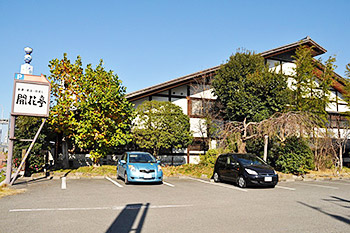
Open hours
11:30-22:00 (Lunch 11:30-14:00)
Open throughout the year
Price
Sushihakozen lunch/ 1,360yen (15-meal limitation)
Others
Parking lot
About 80 cars
Address
16-1, Jitsucho, Tobe town, Iyo gun
Contact information
Telephone number 089-958-5551
Fax number 089-958-5777
Web
http://r.gnavi.co.jp/s025565/( External link )<外部リンク>
-
 Kura Gourmet Akou
Kura Gourmet Akou
In this traditional warehouse along National Route 33, with a nostalgic old world atmosphere, customers can enjoy great food which is a fusion of Japanese and non-Japanese cuisine, as well as local dishes special to the area.
In this traditional warehouse along National Route 33, with a nostalgic old world atmosphere, customers can enjoy great food which is a fusion of Japanese and non-Japanese cuisine, as well as local dishes special to the area.

Customers enjoy a wide variety of meals in the traditional old world atmosphere of this magnificent renovated warehouse. The different morning, lunch, afternoon and dinner menu of the day specials are very popular. On Sundays from 6 p.m., a Luxury Gourmet Kura Menu is available by advanced reservation only. Customers can enjoy full-course dishes with Japanese and western influences.
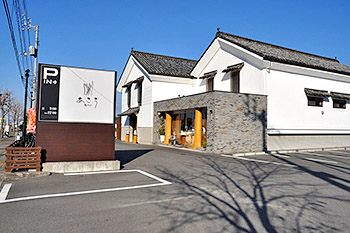
Open hours
9:00-23:00 (Last order 22:00)
Price
-
Parking lot
52 cars
Address
275-1, Aso, Tobe town, Iyo gun
Contact information
Telephone number 089-905-1560
Fax number 089-905-1570
Web
-
kei_company@spice.ocn.ne.jp

GoogleMaps( External link )<外部リンク>

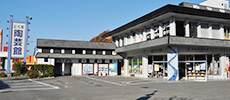

Tobe-yaki Pottery Center
This facility is unique to the "hometown of pottery", in that the main building is designed in a style reminiscent of Tobe-yaki white porcelain and the outer walls of the restroom are decorated with ceramic tiles. The ceramics shown here are composed of products by thirty-three potteries, which show and sell their unique work each with their own distinctive styles.
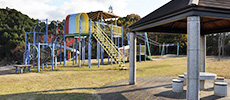

Tokaido (pottery street) Yutori Park
For sports, leisure, and recreation, the park has various facilities such as a large gymnasium with three volleyball courts, Wanpaku Plaza adventure playground, and Ohanami (flower-viewing) Plaza with scenic views and plenty of outdoor seating.
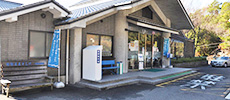

Yutorikan, Tobe Hot Spring
Surrounded by nature, the hot spring is high in sodium, hydrogen carbonate, and chlorides (hypotonic, weak alkaline, low temperature), particularly beneficial for neuralgia, muscle pain and fatigue. Known as "Hot spring of beauty" for its ability to leave you with smooth and healthy-looking skin.
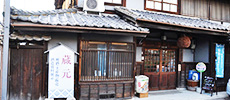

Kuramoto: Hatsuyukihai Outlet Store
An outlet of Kyowa Shuzo, a sake brewery which manufactures Hatsuyukihai. Various kinds of sake produced by the brewery such as Daiginjo, Junmai-daiginjo, Ginjo, Kurauchi-genshu, and Nigorizake are available for purchase. It also sells Tobe-yaki sake cups and bottles.
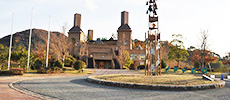

Ehime Children's Playground
A place where children can foster their creativity, independence, sociability, and sensitivity through interactive play. There are five zones: Kid's Town for meeting and making new friends, Event Plaza, a venue for shows and performances, Creativity Hill for children to use their imaginations in making things, Adventure Hill with physical activities and challenges, and Fureai Forest for children to interact with living things in the open air space.
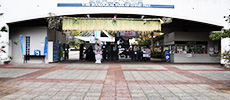

Tobe Zoological Park of Ehime Prefecture
The largest zoo in western Japan, Tobe Zoo was created in April 1988 in Ehime Prefectural Sports Complex. It has about 170 species (about 800 animals). In 2008 a new enclosure was created in Water Street which allows visitors to observe animal behavior*.
* A naturally stimulating environment that aims to give a better view of the way animals live in the wild.














